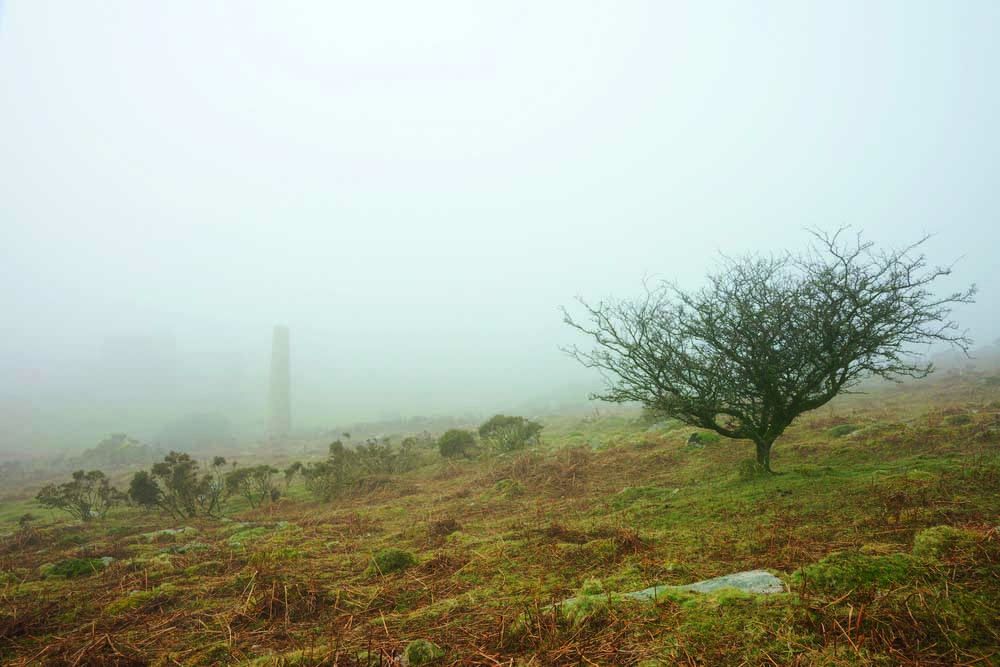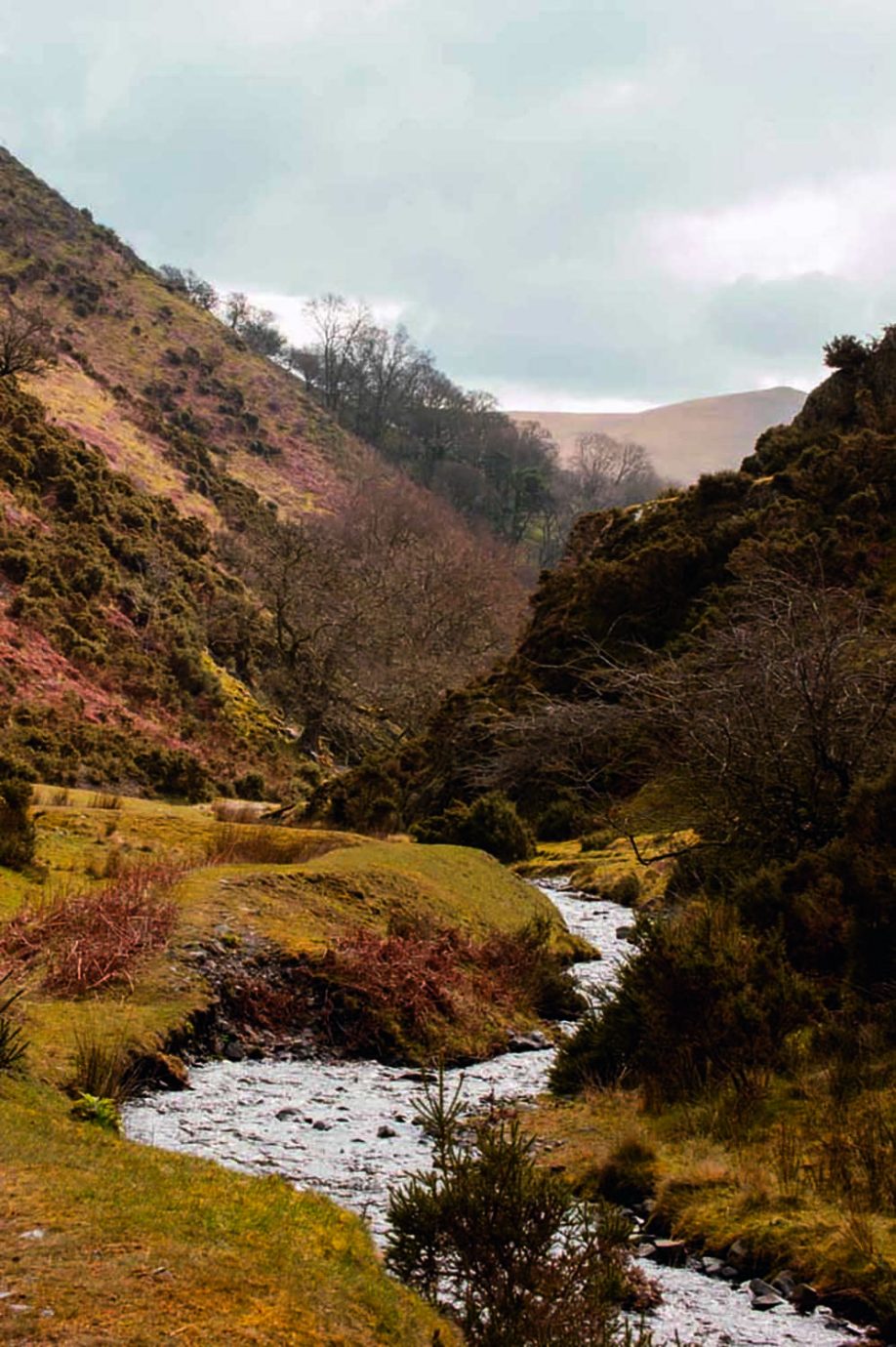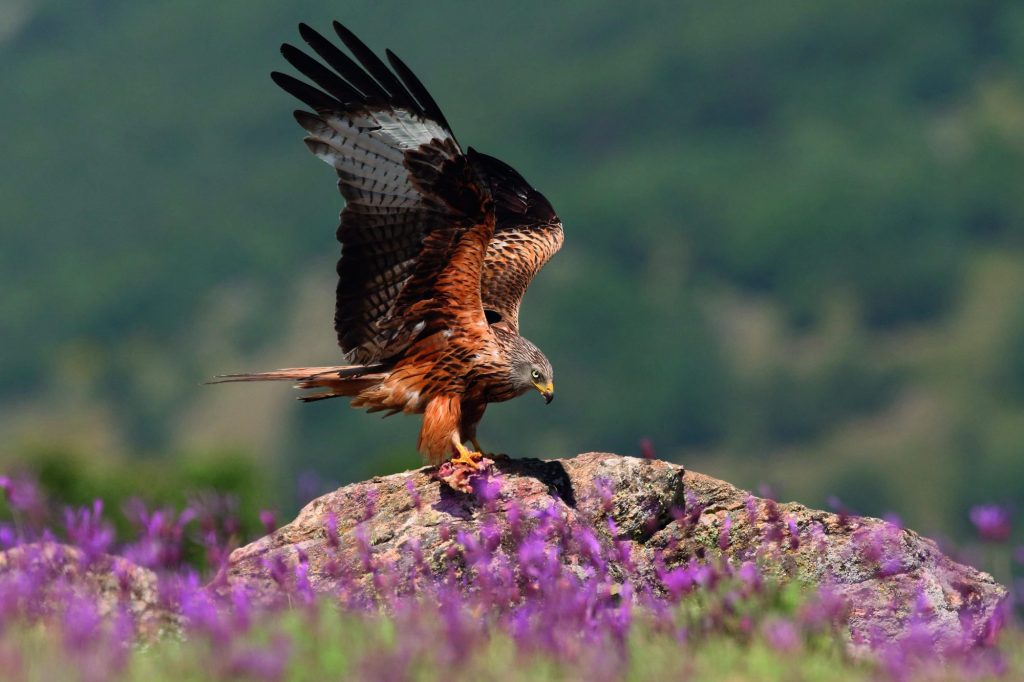Ed continues exploring the Shropshire Hills Area of Outstanding Natural Beauty, visiting the peaceful countryside around the hamlet of Bridges.
For the first Wildlife Diary of 2020, I am starting with a story of hope. Over the last 14 years, there has been a silent and wonderful invasion into Shropshire from the west. The beating wings of this invasion are now starting to spread throughout the county. Red kites were declared extinct in England in 1871 and only a few pairs held on in mid-Wales. A major conservation programme sought to secure the future of the Welsh population. These birds have now spread into Shropshire and, in 2017, a total of 28 kite nests were recorded in the county.
I have always found the most reliable area to see red kites is amongst the quieter reaches of the Shropshire Hills. We begin our journey with a drive over the Burway. This is the single-track road that leads over the top of the Long Mynd. With precipitous drops from the road down into Carding Mill Valley, it’s an exhilarating drive. We pass through sheep grazed pasture dotted with brown bracken fronds, heather and canary yellow gorse bushes.
Lonely hills
The winter weather either side of the Long Mynd can be very different. Today blue skies wash over the eastern flanks, but the western side of the hill is clothed in mist. As we descend through the mist, the silhouette of a distant hawthorn tree shifts in and out of view. This is an all-concealing, disorientating fog that hides the secrets of these lonely hills.
We park the car in the tiny hamlet of Bridges and walk along the lane past the pub. It is difficult to believe that this was once a watering hole on a major coaching route between Shrewsbury and Bishops Castle. We reach a beech tree with a golden crown that glows with all the intensity of the winter sun that has now burnt through the mist. This marks the start of our walk up Adstone Hill.
Leaving the tarmac, we follow an old hedge line up the spine of the hill. A raiding party of redwings and fieldfares fresh from Scandinavia are feasting on the hawthorn berries. The ground begins to steepen before reaching the plateau. I stop by a twisted old rowan tree, scanning the area with my binoculars. Adstone Hill is one of my favourite short walks in the area. At 370m tall, it is a small peak with big views; Long Mynd, the Stiperstones ridge and even Corndon Hill are all visible from the summit.
Spectacular displays
I spot a pair of crows flying around an ash tree, making quite a commotion. A large bird of prey is sitting on a branch. Crows are fiercely territorial and view any bird of prey as a potential threat, mobbing them loudly to try and drive them away. I can make out the hooked beak and ruffled feathers of the nape. The bird takes flight and I can immediately see the distinctive forked tail and long narrow wings of a red kite.
The kite drifts away across the side of the hill and disappears. It seems to be alone. The birds begin to nest in March but in late winter they exhibit territorial behaviour. They form pair bonds and do spectacular flight displays. They can include flying together in unison or swooping towards each other and turning away at the last minute. These exuberant dances in the sky serve to strengthen the pair bond and improve breeding success.
We turn around and head back down the hill. As we reach the lane, another red kite appears from nowhere and floats overhead. Their typical strategy is to fly low over the ground in this way, scanning the area for carrion which is their main source of food. Animals such as rabbits that perish in the harsh winter conditions in these hills are food for the kites. The rusty red plumage with white and black panels is clearly visible as the bird passes over.
It was their fondness for carrion that led to red kites being protected by Royal Decree in middle-age Britain: the birds did a valuable job of keeping the streets clean of dead animals. In the 16th century, kites were declared vermin and a bounty placed on their head. This, along with egg collectors and persecution on sporting estates, led to a crash in the population. As well as the conservation work to help the Welsh population grow, there have also been several reintroductions into England and Scotland. Across the UK, red kite numbers are now increasing. Last summer, I even saw a kite circling over our road in Bridgnorth, giving hope that one day they might become a regular sight in our area.
Do one thing for wildlife this month…
The spread of red kites through Shropshire is being monitored by the Welsh Kite Trust. If you see red kites in the Shropshire skies, please let the Trust know. Of particular interest are observations of birds with wing tags as they can be tracked. For more information and to report a sighting, go to welshkitetrust.wales.
Edward Andrews, MSc.









